Structural polymorphism of the PH domain in TFIIH
- PMID: 37340985
- PMCID: PMC10345426
- DOI: 10.1042/BSR20230846
Structural polymorphism of the PH domain in TFIIH
Abstract
The general transcription factor TFIIH is a multi-subunit complex involved in transcription, DNA repair, and cell cycle in eukaryotes. In the human p62 subunit and the budding yeast Saccharomyces cerevisiae Tfb1 subunit of TFIIH, the pleckstrin homology (PH) domain (hPH/scPH) recruits TFIIH to transcription-start and DNA-damage sites by interacting with an acidic intrinsically disordered region in transcription and repair factors. Whereas metazoan PH domains are highly conserved and adopt a similar structure, fungal PH domains are divergent and only the scPH structure is available. Here, we have determined the structure of the PH domain from Tfb1 of fission yeast Schizosaccharomyces pombe (spPH) by NMR. spPH holds an architecture, including the core and external backbone structures, that is closer to hPH than to scPH despite having higher amino acid sequence identity to scPH. In addition, the predicted target-binding site of spPH shares more amino acid similarity with scPH, but spPH contains several key residues identified in hPH as required for specific binding. Using chemical shift perturbation, we have identified binding modes of spPH to spTfa1, a homologue of hTFIIEα, and to spRhp41, a homologue of the repair factors hXPC and scRad4. Both spTfa1 and spRhp41 bind to a similar but distinct surface of spPH by modes that differ from those of target proteins binding to hPH and scPH, revealing that the PH domain of TFIIH interacts with its target proteins in a polymorphic manner in Metazoa, and budding and fission yeasts.
Keywords: NMR spectroscopy; PH domain; TFIIH; budding yeast; general transcription factor.
© 2023 The Author(s).
Conflict of interest statement
The authors declare that there are no competing interests associated with the manuscript.
Figures
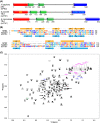
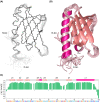
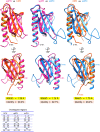
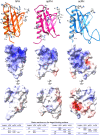
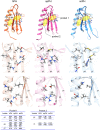
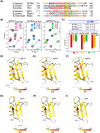

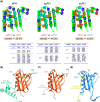
Similar articles
-
NMR structure of the amino-terminal domain from the Tfb1 subunit of TFIIH and characterization of its phosphoinositide and VP16 binding sites.Biochemistry. 2005 May 31;44(21):7678-86. doi: 10.1021/bi050099s. Biochemistry. 2005. PMID: 15909982
-
Structure of the Tfb1/p53 complex: Insights into the interaction between the p62/Tfb1 subunit of TFIIH and the activation domain of p53.Mol Cell. 2006 Jun 23;22(6):731-740. doi: 10.1016/j.molcel.2006.05.007. Mol Cell. 2006. PMID: 16793543
-
Structural and dynamical insights into the PH domain of p62 in human TFIIH.Nucleic Acids Res. 2021 Mar 18;49(5):2916-2930. doi: 10.1093/nar/gkaa1045. Nucleic Acids Res. 2021. PMID: 33211877 Free PMC article.
-
Architecture of the Human and Yeast General Transcription and DNA Repair Factor TFIIH.Mol Cell. 2015 Sep 3;59(5):794-806. doi: 10.1016/j.molcel.2015.07.016. Mol Cell. 2015. PMID: 26340423 Free PMC article.
-
TFIIH: A multi-subunit complex at the cross-roads of transcription and DNA repair.Adv Protein Chem Struct Biol. 2019;115:21-67. doi: 10.1016/bs.apcsb.2019.01.003. Epub 2019 Feb 10. Adv Protein Chem Struct Biol. 2019. PMID: 30798933 Review.
References
Publication types
MeSH terms
Substances
LinkOut - more resources
Full Text Sources
Molecular Biology Databases
Research Materials

